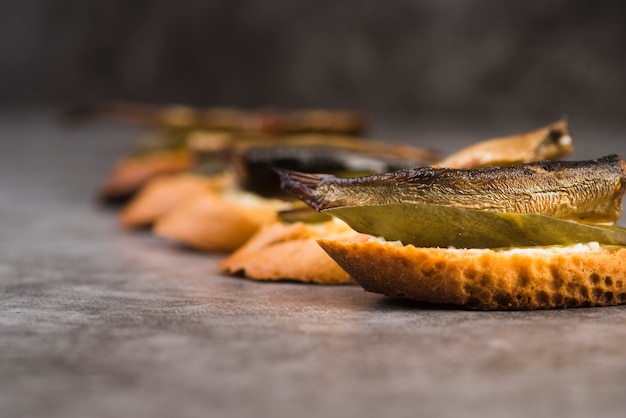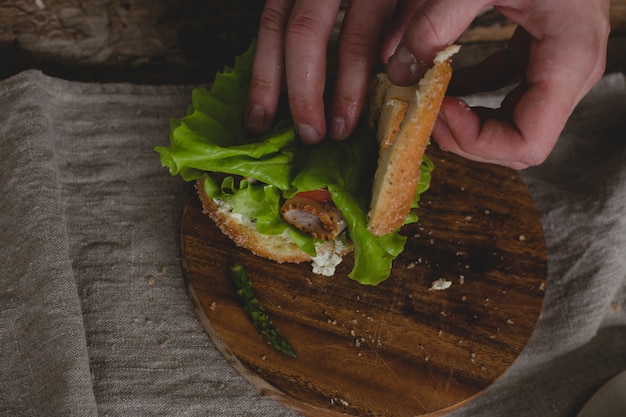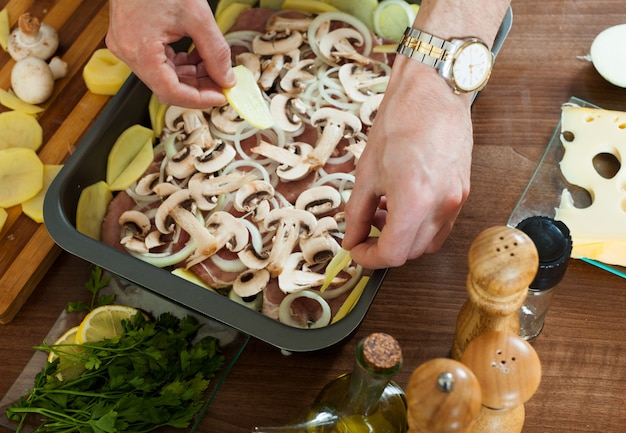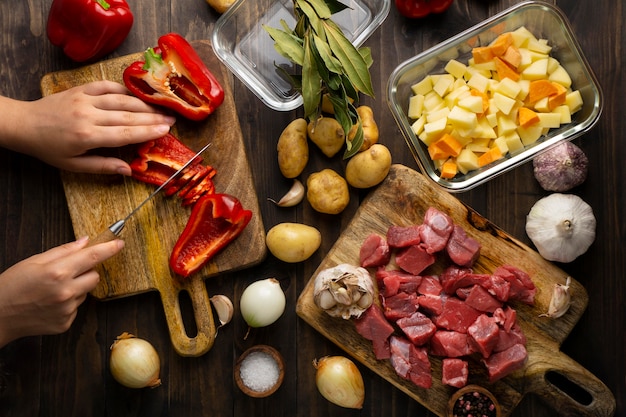(Part 1) Sourcing Your Frog Legs

Beyond traditional sources, there's another avenue you might consider: sustainable frog farms. These farms are popping up in some parts of the world, offering a more ethical and controlled way to source frog legs. Look for farms that prioritize animal welfare and sustainable practices. You can usually find information about their methods on their websites or through online reviews.
Choosing the Right Frog Legs
When you're shopping for frog legs, there are a few things to keep in mind. You want to look for legs that are firm to the touch, a nice pale colour, and free of any unpleasant odours. If they look a bit limp or have a sickly yellow tinge, then it's best to avoid them. Think of it this way: you wouldn't buy limp, discoloured chicken, would you? Same principle applies here.
Frozen or Fresh?
Now, a lot of people ask me if it's better to get frozen or fresh frog legs. Frankly, it's a matter of personal preference. I've used both, and there's not much difference in the taste. Just make sure that you defrost your frozen frog legs completely before cooking them. You can do this in the fridge overnight, or by placing them in a bowl of cold water for a couple of hours. Just don't do it on the counter, please. No one wants a kitchen full of melted frog legs.
(Part 2) Preparing Your Frog Legs

Washing and Trimming
First things first, wash your frog legs thoroughly under cold running water. If they're still attached, you'll want to separate the legs at the joint. Then, give them another rinse. It's a good idea to trim away any excess skin, especially around the thighs. This will help to reduce the "gamey" flavour that some people find off-putting. Just snip off the skin with a sharp pair of kitchen scissors.
Patting Them Dry
Now, you've got your frog legs looking nice and clean. But we're not quite ready to cook them yet. The next step is to pat them dry with some kitchen paper. This is important because you want to remove any excess moisture. Water will make your frog legs steam instead of crisp up, and no one wants soggy frog legs. I'm telling you, it's a culinary crime.
(Part 3) Choosing Your Cooking Method

Pan-Frying for Crispy Goodness
For a crispy, delicious, and incredibly satisfying frog leg experience, pan-frying is the way to go. This method will give your frog legs a beautiful golden-brown colour and a crispy, crunchy exterior. Plus, it's super easy to do. Just heat up some oil in a frying pan over medium heat, add your frog legs, and cook for about 3-4 minutes per side, or until golden brown and cooked through. You'll know they're done when the flesh is no longer translucent.
Baking for a Lighter Option
If you're looking for a lighter, healthier option, then baking is a good choice. Preheat your oven to 400°F (200°C) and line a baking sheet with parchment paper. Drizzle your frog legs with some olive oil and season them with salt, pepper, and any other herbs or spices you like. Spread the legs out on the baking sheet in a single layer, and bake for about 15-20 minutes, or until cooked through.
Roasting for a Richer Flavor
Roasting is another great way to cook frog legs, and it brings out a richer flavour. Preheat your oven to 425°F (220°C). Place your frog legs on a roasting rack over a baking sheet. Drizzle with olive oil, season with salt, pepper, and any other herbs or spices you like, and roast for about 15-20 minutes, or until cooked through.
Deep-Frying for a Crunchy Indulgence
If you're feeling adventurous and want to really indulge, then deep-frying is the way to go. Heat up some oil in a deep fryer to 375°F (190°C). Dip your frog legs in a light batter, such as tempura batter or a simple cornflour and water mixture, and carefully lower them into the hot oil. Fry for about 2-3 minutes, or until golden brown and cooked through.
(Part 4) Adding Flavor with Marinades and Sauces
Okay, we're nearly at the finish line. Your frog legs are cooked to perfection, and they look amazing. But let's not forget about the flavour. To really take your frog legs to the next level, you can add some flavourful marinades or sauces.Marinades for Enhanced Flavor
Marinating your frog legs before cooking can add a whole new dimension to their flavour. You can use a simple marinade of soy sauce, garlic, and ginger, or get creative with herbs and spices like paprika, oregano, or thyme. Marinate your frog legs for at least 30 minutes, or even overnight, for the best results.
Here's a simple marinade recipe you can try:
| Ingredient | Amount |
|---|---|
| Soy Sauce | 1/4 cup |
| Garlic, minced | 2 cloves |
| Ginger, grated | 1 tablespoon |
| Honey | 1 tablespoon |
| Lime juice | 1 tablespoon |
Combine all ingredients in a bowl and whisk until well combined. Add the frog legs, making sure they are fully submerged in the marinade. Cover and refrigerate for at least 30 minutes, or up to overnight. When ready to cook, remove the frog legs from the marinade and pat them dry.
Sauces for a Finishing Touch
Once your frog legs are cooked, you can finish them off with a delicious sauce. A classic choice is a simple lemon butter sauce, made with melted butter, lemon juice, and chopped parsley. But you can also get creative with other sauces like a garlic herb sauce, a spicy chili sauce, or even a sweet and sour sauce.
Here's a simple lemon butter sauce recipe:
| Ingredient | Amount |
|---|---|
| Butter | 2 tablespoons |
| Lemon juice | 1 tablespoon |
| Parsley, chopped | 1 tablespoon |
| Salt and pepper | To taste |
Melt the butter in a small saucepan over low heat. Stir in the lemon juice and parsley. Season with salt and pepper to taste. Spoon the sauce over the cooked frog legs and serve immediately.
(Part 5) Serving Your Frog Leg Delights
Finally, your frog legs are ready to be served. And let me tell you, they're going to be delicious. You can serve them on their own, or with a side of rice, pasta, or a green salad. I love to serve mine with a side of mashed potatoes and a drizzle of garlic herb sauce. It's a simple and satisfying meal that's sure to impress your guests.Garnishing for a Touch of Elegance
To make your frog legs look even more appealing, you can garnish them with a few sprigs of parsley or a squeeze of lemon juice. You can also serve them on a bed of arugula or baby spinach for a touch of elegance.
Enjoying Your Culinary Triumph
Now, the moment of truth has arrived. It's time to dig in and enjoy your culinary triumph. Take a bite, savour the flavour, and let the crispy texture melt in your mouth. I promise you, you won't regret it.
(Part 6) Some Helpful Tips and Tricks
Okay, you've got the basics down. But let's talk about a few tips and tricks that will elevate your frog leg game to a whole new level.Tip 1: Don't Overcook
Frog legs are delicate, so it's easy to overcook them. They'll become dry and tough if you cook them for too long. Use a meat thermometer to check their temperature. They're cooked through when they reach an internal temperature of 165°F (74°C).
Tip 2: Experiment with Flavors
Don't be afraid to experiment with different flavours. There are so many different ways to season and cook frog legs. Try different herbs and spices, marinades, and sauces to find your perfect combination. You might discover your new favourite dish.
Here are a few flavour combinations to try:
- Mediterranean: Marinate the frog legs in olive oil, lemon juice, garlic, oregano, and rosemary. Serve with a side of roasted vegetables and a lemon-herb sauce.
- Asian-Inspired: Marinate the frog legs in soy sauce, ginger, garlic, and sesame oil. Serve with a side of stir-fried vegetables and a sweet and sour sauce.
- Spicy: Marinate the frog legs in a mixture of chili powder, paprika, cumin, and garlic. Serve with a side of rice and a spicy chili sauce.
Tip 3: Don't Be Afraid to Ask for Help
If you're new to cooking frog legs, don't be afraid to ask for help. Your local butcher or a seasoned chef can give you some great tips and advice. They might even have a favourite recipe they're willing to share.
(Part 7) FAQ: Your Frog Leg Questions Answered
Right, I'm going to be honest: You've got questions, and I'm here to answer them. Here are some of the most common questions about frog legs:1. Are frog legs really that good?
Well, that's a matter of taste, of course, but I personally find them delicious. They're lean, tender, and have a delicate flavour that's reminiscent of chicken and fish. They're also incredibly versatile, so you can cook them in many different ways.
2. What do frog legs taste like?
It's difficult to describe exactly what they taste like, but it's a bit of a mix between chicken and fish. They have a delicate flavour that's not overly strong. It's best to try them yourself to find out.
3. Where can I buy frog legs?
If you're in the UK, you can try your local butcher shop, or if you don't have one nearby, you can find them online. Many online stores sell frog legs, so a quick Google search will lead you in the right direction. You can also check out local Asian markets, as frog legs are a popular ingredient in many Asian cuisines.
4. How long do frog legs take to cook?
The cooking time for frog legs depends on the method you choose. Pan-frying takes about 3-4 minutes per side, baking takes 15-20 minutes, roasting takes 15-20 minutes, and deep-frying takes 2-3 minutes.
5. What are some good side dishes for frog legs?
Frog legs pair well with a variety of side dishes. I personally love them with mashed potatoes, rice, pasta, or a green salad. You can also get creative and serve them with other side dishes, like roasted vegetables or a hearty soup.
(Part 8) Conclusion: A culinary adventure Awaits
There you have it - my comprehensive guide to cooking delicious frog legs. It's not as complicated as it might seem, and with a little bit of effort, you can create a culinary masterpiece that will impress even the most discerning palate. So, what are you waiting for? Go out there, grab some frog legs, and embark on a culinary adventure! You won't be disappointed.
Everyone is watching

Perfect Rice Every Time: The Ultimate Guide to Cooking Rice
Cooking TipsAs a self-proclaimed foodie, I've always been a bit obsessed with rice. It's the foundation of countless cuisi...

Ultimate Guide to Cooking the Perfect Thanksgiving Turkey
Cooking TipsThanksgiving. Just the word conjures up images of overflowing tables laden with delicious food, the scent of r...

The Ultimate Guide to Cooking Asparagus: Tips, Techniques, and Recipes
Cooking TipsAsparagus. The mere mention of this spring delicacy conjures up images of vibrant green spears, crisp and burs...

Can You Cook Spaghetti with Gasoline? (The Shocking Truth)
Cooking TipsWe've all seen those crazy internet trends. You know, the ones that make you wonder, "Did someone actually try...

Chorizo and Eggs Recipe: The Ultimate Guide
Cooking TipsRight, let’s talk about chorizo and eggs. You know, that classic Spanish dish that's always a winner. It's th...
